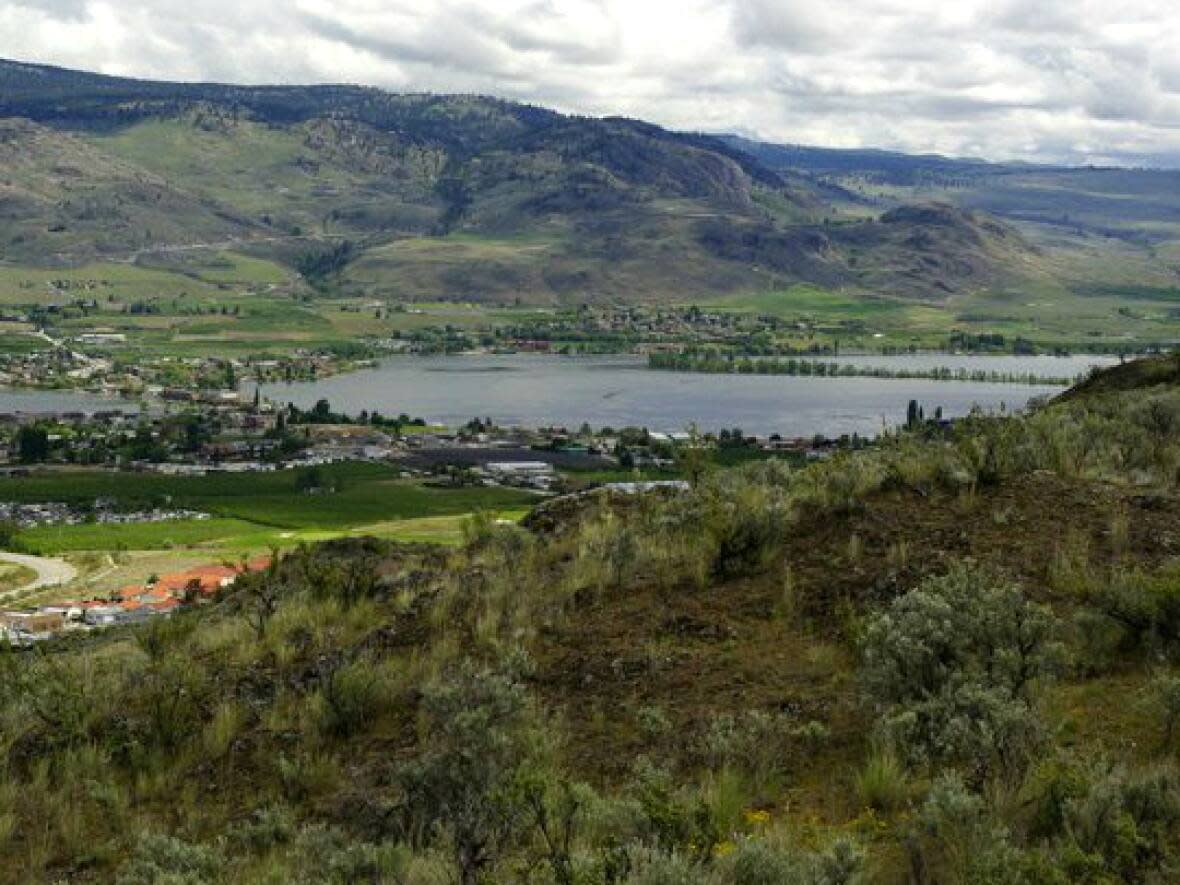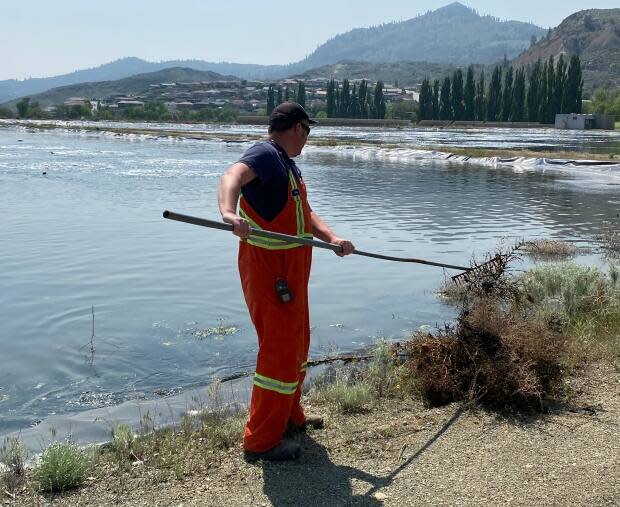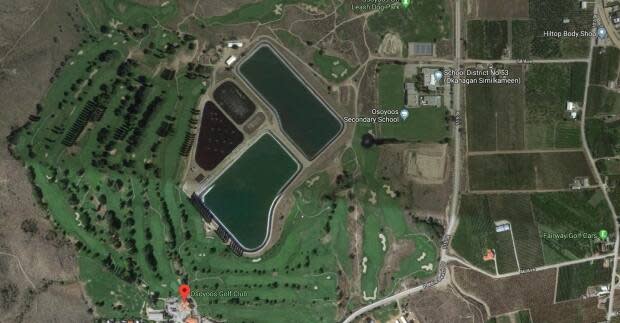Town of Osoyoos working to flush away odour issues at sewage lagoon

For lifelong Osoyoos, B.C., resident Tina Slater, the stench wafting off the town's sewage lagoon is an issue that people have had to endure for as long as she can remember.
The South Okanagan community of 5,500 residents has three sewage lagoons that process the community's wastewater.
When the temperature rises in the spring and summer, the odour coming off the sewage ponds often rises along with it, according to Slater.
"It's been going on for years. You go downtown to the grocery store, and everybody's talking about it. The air is kind of stagnant, and just the whole town stinks."
A heat wave earlier this month brought on the unpleasant odour, Slater said, adding that instead of waxing and waning as usual, the sewage odour persisted for days on end.
'It actually makes your eyes water'
"You want to open your windows at night to get a little bit of cool air, and we could not do that because it filled the whole house with that smell," she said.
"It just has that manure, chicken poop kind of smell to it. It actually makes your eyes water."

The oppressive odour Slater and others in the community are dealing with this spring is a sign of a bigger problem with Osoyoos' sewage treatment system, according to officials with the town, and one that doesn't have an easy solution.
"We believe at this point it's a pond failure," said Rod Risling, Osoyoos's chief administrative officer.
"There is basically an ecosystem, and there is decomposition that occurs [in the sewage pond], and that whole process has failed and is no longer working."
Plan to flush and reset the lagoon
Cooler temperatures, along with the use of chemicals by municipal staff, have alleviated the odour issue in recent days, Risling said, adding that the town is working with the Ministry of Environment on a long-term fix of the issue.
That involves applying for provincial approval for the town to take the lagoon cell offline, drain out the sewage and clean it in order to "start fresh," according to Risling, who said it could take several months to restore the lagoon to where it's working properly.
One factor that could aggravate the issue is the influx of visitors coming to the resort community over the tourist season.
"That puts a lot of pressure on our waste operators," Risling said.
"There are going to be some bumps along the way, and unfortunately, people should expect [odour issues], but again, we are going to do whatever we can to mitigate it."

Osoyoos' sewage treatment, along with the town's drinking water system, were key election issues last fall during the municipal election.
The town is revising its master water plan and its wastewater master plan, according to Mayor Sue McKortoff, in order to find long-term solutions to the issues.
Infrastructure improvement options are expensive
"We are definitely working on those and trying our best," McKortoff said, calling a new water treatment plant the first priority for the town.
"Everything, of course, is dependent on money and grants."
In an information bulletin to residents on the town's website, officials wrote that a new wastewater treatment plant would cost upwards of $40 million with an annual operating cost increase of $300,000.
"These processes can fail just as easily as a lagoon system," the release states. "At this time, the town does not feel that this is an economical solution to our treatment and odour issues."
As the municipality works to correct the immediate issue with the failed sewage pond, Risling encouraged residents and visitors to do their part to not further stress the system by not flushing things not meant to be processed in a lagoon, like disposable wipes, cooking oil or food.
"That going into our sewage lagoon is not a great thing," Risling said.


